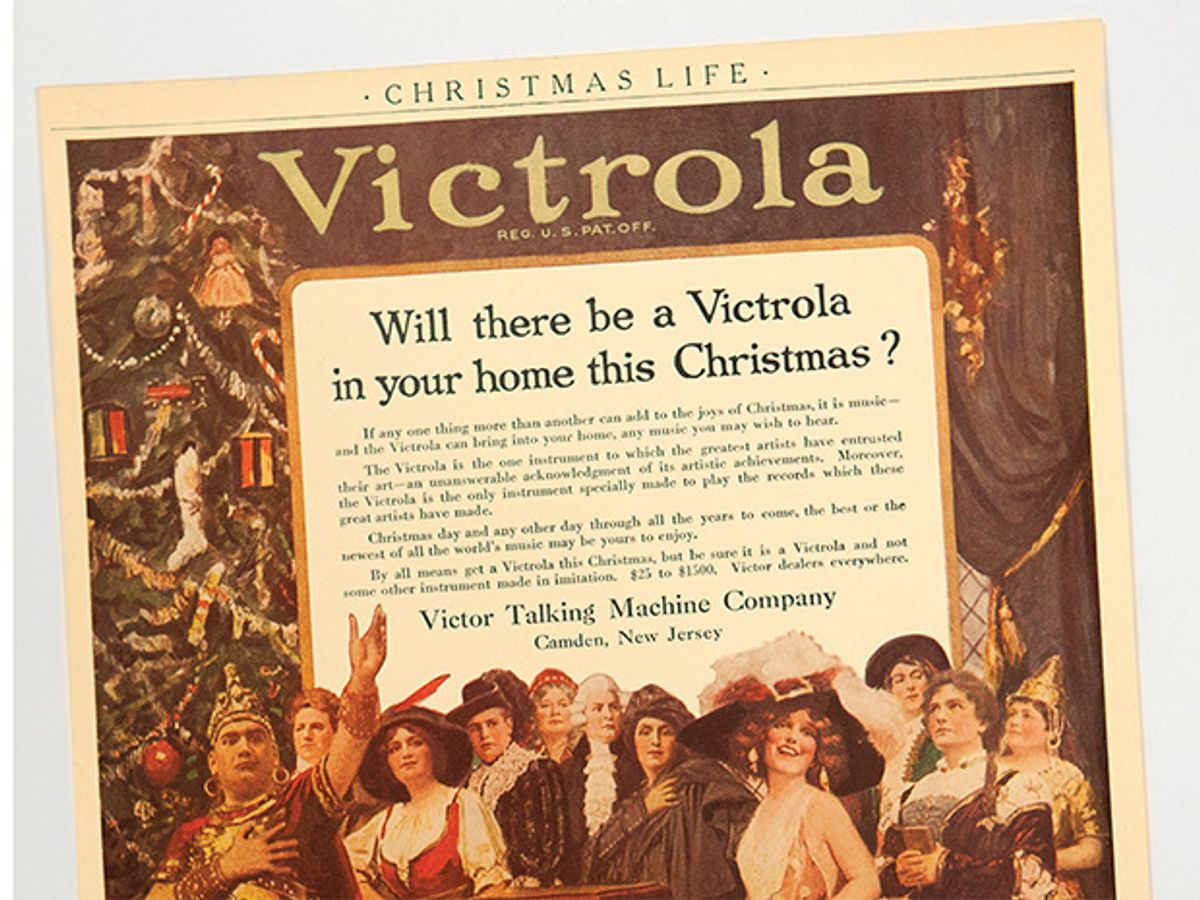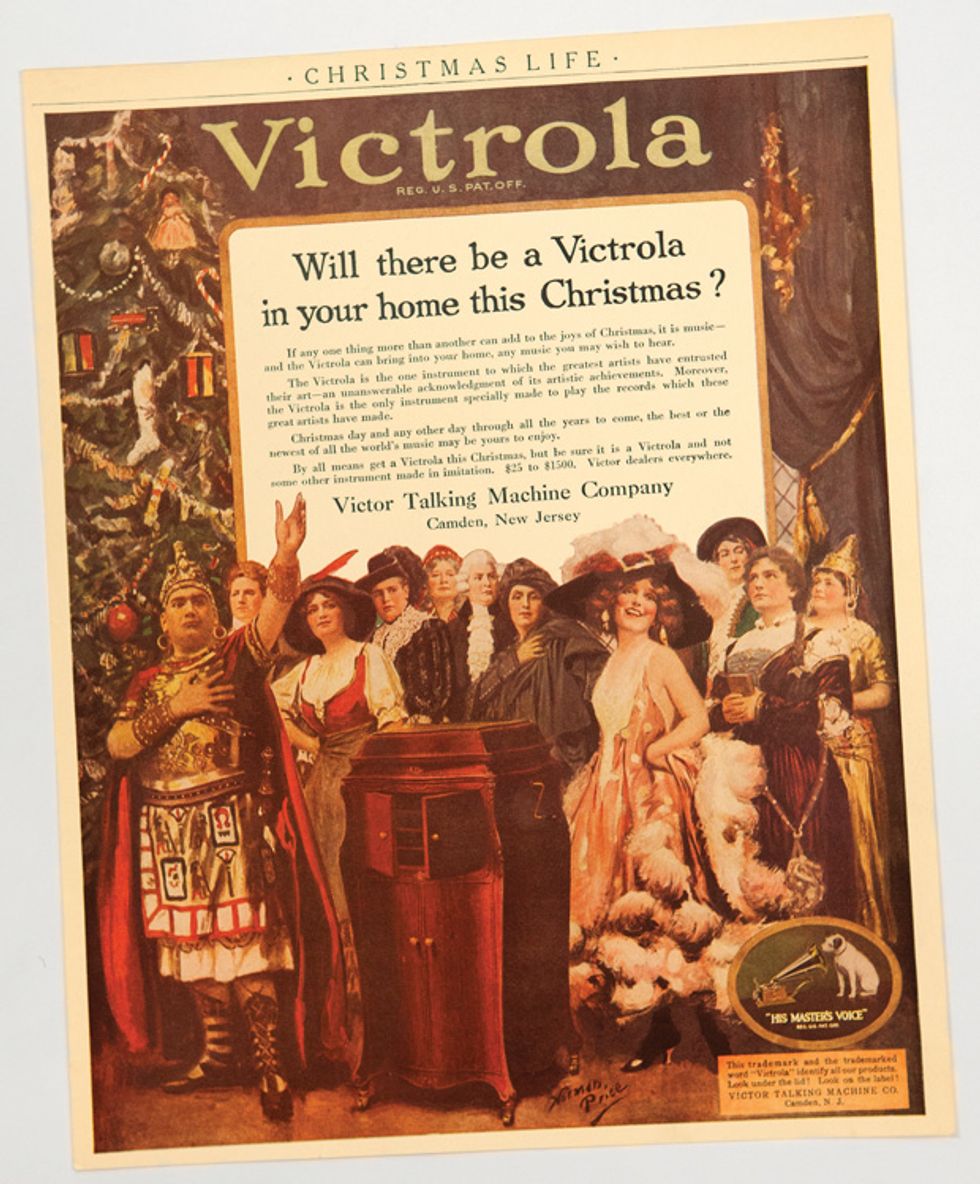At the start of the 20th century, the phonograph industry was the second-fastest growing in the United States, trailing only automobiles. Victrola gramophones played black discs formulated from slate powder and the resinous secretions of lac insects. A standard 25-centimeter disc held 3 minutes of sound. But the real profits lay in Victor’s 30-cm Red Seal recordings of classical performers; tenor Enrico Caruso [far left in this December 1920 ad] was a favorite. As music formats have morphed from vinyl discs to cassettes to CDs and MP3s, the classical recording industry is nearly extinct. With sound streamed from the cloud, do you really need to own the music you listen to?
This article originally appeared in print as “When Caruso Was King.”
Part of a continuing series looking at the story of technology as told through advertisements.

